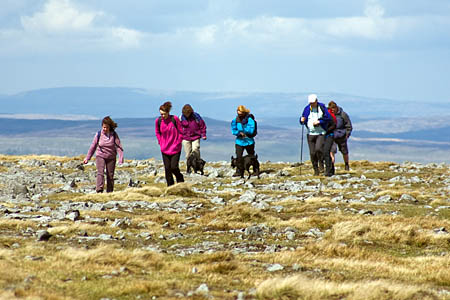
The national park authority says dog walkers should clean up their animals' mess
Dog walkers are being urged to clean up their pets’ mess to stop the spread of a parasite that devastates cattle herds.
The Yorkshire Dales National Park Authority said the neospora organism is found in dog faeces and is a danger to pregnant cows, causing them to abort or give birth to affected calves.
Alan Hulme, the authority’s ranger services manager, said: “We are urging all dog owners to make sure they clean up after their pets when they are walking in the national park.
“Just one incident of a cow eating some of these eggs can have a huge impact on a whole herd – and a farmer’s future livelihood.”
Skipton vet Andy Barrett stressed that there was no danger to humans from eating meat from an infected cow or drinking its milk.
But he said: “Just one infected cow can have dire consequences on the profitability of a farm.
“If cattle are infected during pregnancy, the result can be abortion, birth of a weak calf or birth of a normal-looking calf that is infected for life. These calves then transmit the parasite across the placenta to all their offspring for the rest of their lives and these offspring are themselves up to seven times more likely to abort.”
“Abortions are very costly and they deprive beef farmers of a calf from the affected cow and, in the case of dairy cows, lead to the loss of milk and a calf. An abortion in a dairy cow has been estimated to lead to a financial loss of £1,200.
“In addition, infected cattle can only be identified by expensive blood tests and there is no treatment for the infection.
“Once introduced into a herd, the parasite is spread very efficiently to calves and the involvement of dogs is no longer necessary.
“This year we have seen a significant rise in cases. In just two farms alone there have been 21 reported cases in the last six months – last year there were only four.
“There are no effective control measures against the parasite so it is essential that dogs are not allowed to foul farm land which could be grazed by cattle.
“We would ask all owners to clear up after their dogs wherever they foul – not just on footpaths.”
He said the parasite rarely caused disease in dogs and was very difficult to detect.
Chad
28 August 2010Do you realize that you never mentioned what parasite it was? Don't you think people might want to know the name?
Bob
28 August 2010The parasite is neospora, as the story says in the second paragraph.
Bob, editor
Chad
28 August 2010My apologies.